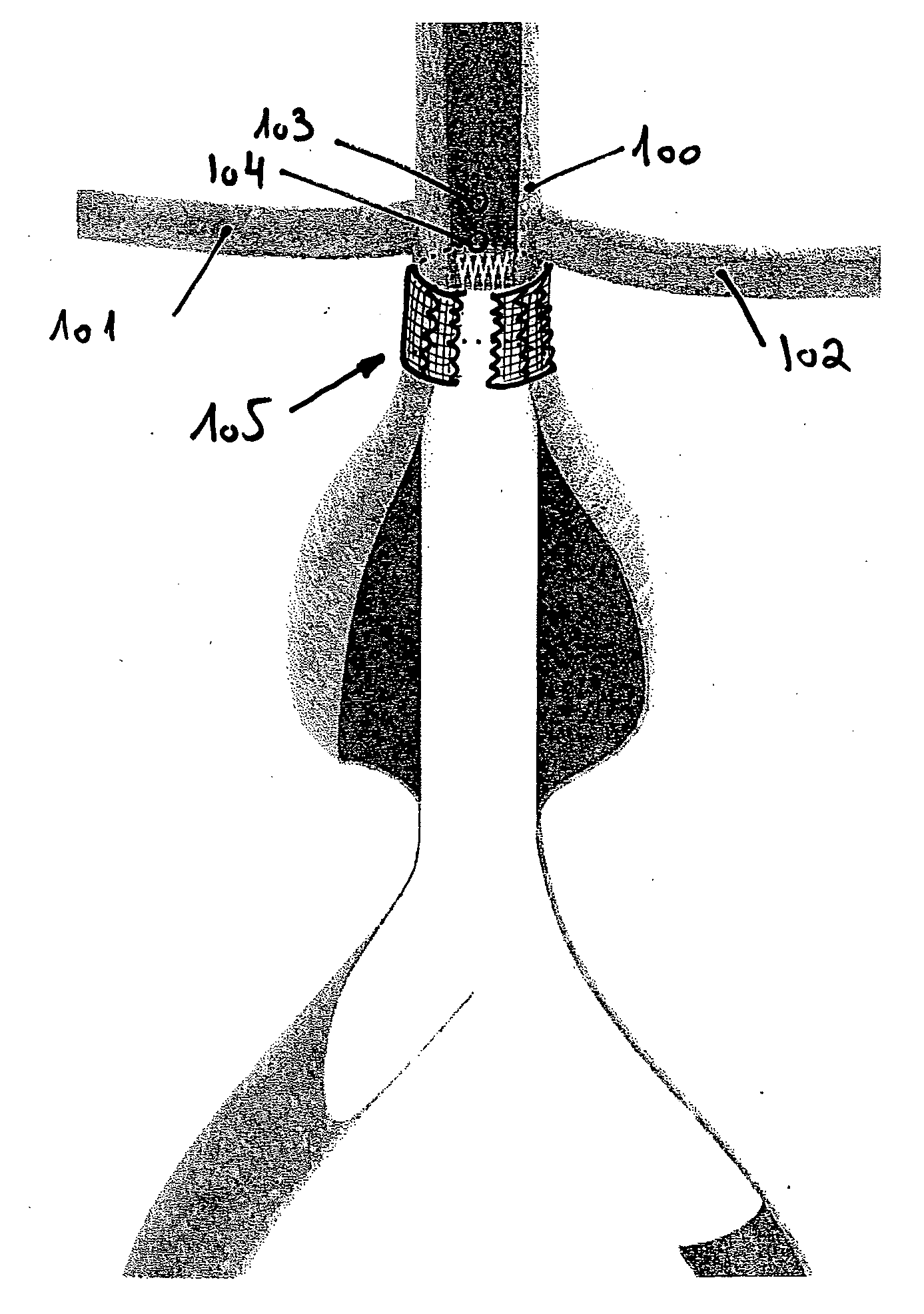Extra-Vascular Wrapping for Treating Aneurysmatic Aorta in Conjunction with Endovascular Stent-Graft and Methods Thereof
a technology of endovascular stents and aneurysms, applied in the field of extravascular wrapping, can solve the problems of aortic aneurysm, life-threatening, ruptured blood loss, etc., and achieve the effects of preventing internal organ sticking to the wound, and preventing scar tissue formation and attachmen
- Summary
- Abstract
- Description
- Claims
- Application Information
AI Technical Summary
Benefits of technology
Problems solved by technology
Method used
Image
Examples
Embodiment Construction
[0073]The following description is provided, alongside all chapters of the present invention, so as to enable any person skilled in the art to make use of the invention and sets forth the best modes contemplated by the inventor of carrying out this invention. Various modifications, however, will remain apparent to those skilled in the art, since the generic principles of the present invention have been defined specifically to provide an implementable kit and EVR for treating an aneurysmatic abdominal aorta and methods thereof.
[0074]It is one embodiment of the invention wherein an implementable kit for treating an aneurysmatic abdominal aorta is disclosed. The kit comprises at least two attachable elements: an endovascular stent-graft (ESG) and an extra-vascular wrapping (EVW). The ESG comprises a structural member (ESG-SM) adjustable between an expanded state and a radially-deformed state; and a fluid flow guide (FFG) formed of textile strands, substantially impervious to fluids and...
PUM
 Login to View More
Login to View More Abstract
Description
Claims
Application Information
 Login to View More
Login to View More - R&D
- Intellectual Property
- Life Sciences
- Materials
- Tech Scout
- Unparalleled Data Quality
- Higher Quality Content
- 60% Fewer Hallucinations
Browse by: Latest US Patents, China's latest patents, Technical Efficacy Thesaurus, Application Domain, Technology Topic, Popular Technical Reports.
© 2025 PatSnap. All rights reserved.Legal|Privacy policy|Modern Slavery Act Transparency Statement|Sitemap|About US| Contact US: help@patsnap.com



